Foo Dogs: The History of Chinese Guardian Lions
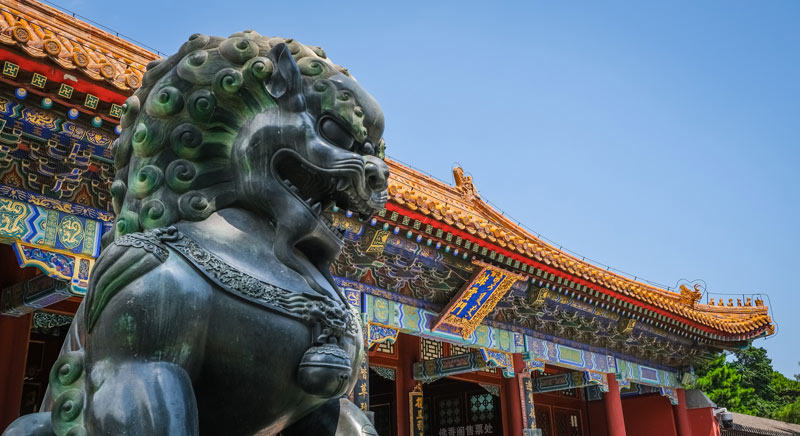
A Friday night search for Sichuan's hotpot will place any intrepid adventurer down the winding walkways of Old China Town. Surrounding the cobble stone pathway leading away from the quiet concrete skyscrapers is the bustling tapestry of the old Orient, lit by glowing windows of shops and restaurants. Each one is filled with the steam of freshly cooked meals, congeries of clanking dishes, and the interlacing of languages spoken in English, Mandarin, Cantonese, and occasionally Japanese or Korean. At the end of this cultural tapestry woven from sights and sounds, hangs an archway, under which stands two stone guardians. Foo Dogs, they are called.
Although their details have now been worn away by rain and sun, their presence remains imposing: muscle bound with furrowed brows, and fiery manes curling into bundles of braided whirls. Their open mouths reveal sharp teeth and a curled tongue giving the impression that at any given moment, the stone will give way to flesh, and their roars will echo forth. Their ages are unknown. One thing is for certain: these creatures are ancient and wise, and the details that remain on their rough stony exteriors speak of a long and rich history.
Shi and Ser: and the Lions of Kings
Although ubiquitously and colloquially known in the West as Foo Dogs, these creatures are seldom referred to as dogs in Chinese. Rather, they are Shi, or lions. It is customary to delineate the creatures' materials or mediums. As such, a stone lion is shishi, while a bronze lion is tongshi. These are also sometimes acknowledged by their innate qualities or abilities: and an auspicious lion is Ruishi, a fortuitous lion is Fushi, while the Lion of Buddha is Foshi.
The history of Chinese lions dates back thousands of years, with the earliest record of lions coming from the Han Dynasty (221 BCE - 200 CE). Geographically, lions were not native to China, but historians believe that lions came into Chinese knowledge through trade along the Silk Route. Han imperial records also indicate that lions were brought to the Han court by emissaries from Central Asia and Persia. The word Shi, itself, is believed to be derived from the Persian word for lion, or Ser.
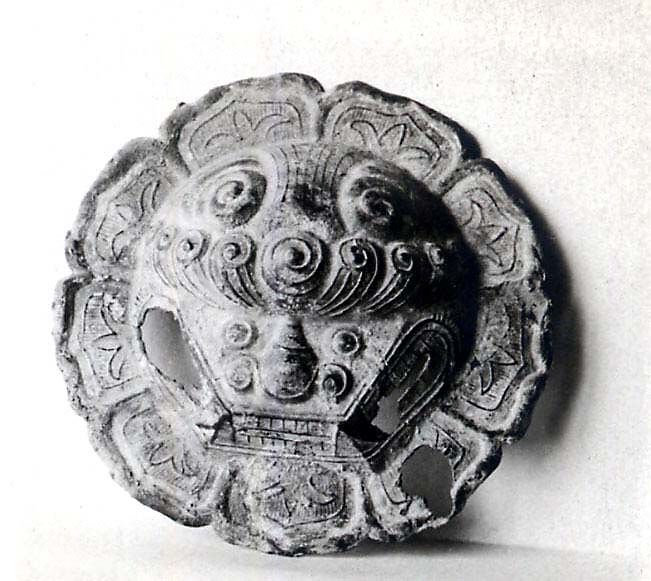
A Han Dynasty metal mask with lion features
Imperial records from this era, written by royal court minstrels, also expressed the majestic qualities of the lion and how they captivated Han's emperors. As a result, the Han royalty adopted the lion as protection iconography and adorned their tombs and shrines with stone and earthen sculptures of these magnificent creatures. These sculptures were often placed in pairs, one on each side of an entrance, to act as guardians.
Two of the surviving sculptures from that era are the lion statues of Gaoyi Que, in Gaoyi Township of Hunan. A que is a freestanding ceremonial gate pillar, first developed in the Zhou Dynasty (1046 BCE - 256 CE) and used until the Qing Dynasty (1644 - 1912 CE) These pillars act as gates without doors or walls and serve as spiritual gateways for royal tombs. The two strikingly well preserved sculptures of male lions stand guard at Gaoyi Que. Their appearance conforms to the standard depiction of the male Asiatic lions that once roamed Central and Southern Asia. They have hairy manes, large paws, slender bodies that taper toward narrow waists, and they stand on four legs with heads held high. This is one of the earliest known examples of lion statues being placed in pairs, a practice that would become more common in years to come.
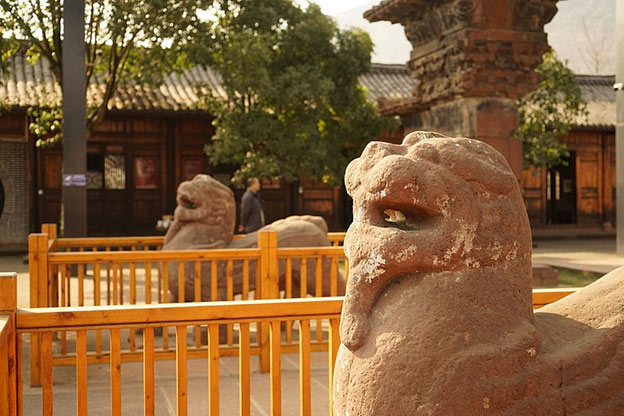
These twin statues at the Gaoyi Que complex are some of the oldest known surviving examples of lion sculpture in China.
Other early artwork depicting lions can be found in royal tombs such as the Wu Family Shrines in Shantung Province (dated to approximately 147 CE), and the Teng-Hsien tomb from the Six Dynasties Period (220–589 CE) Unlike their depiction in the west, where lion imagery was commonly used as an imperial and courtly symbol, the Chinese expanded on these creatures' majestic power and established them as the guardians of liminal space, the transitional space between the physical and spiritual realm.
In 2017, the Metropolitan Museum of Art hosted an exhibition titled 'Age of Empires, Chinese Art of the Qin and Han Dynasty.' In this exhibition were two lion sculptures, one from the Han Dynasty and one from the Northern Qi Dynasty (550-577 CE) These two sculptures exemplify the artistic change in lion imagery that took place during these two dynasties. Unlike the Han Dynasty's semi-realistic, elongated, and rigid depiction, the later Qi sculpture has a much more naturalistic roundness to its movement. More importantly however, this sculpture showcases a stylized depiction of the lion's mane, with a whorl pattern across its body, which eventually became the standard for lion stone sculptures of later generations.
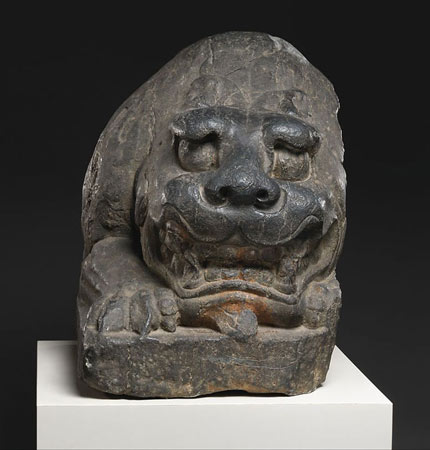
Chinese lion statue from the Qi Dynasty, mid 6th century. This statue is one of a pair featured at a Metropolitan Museum of Art exhibition in 2017.
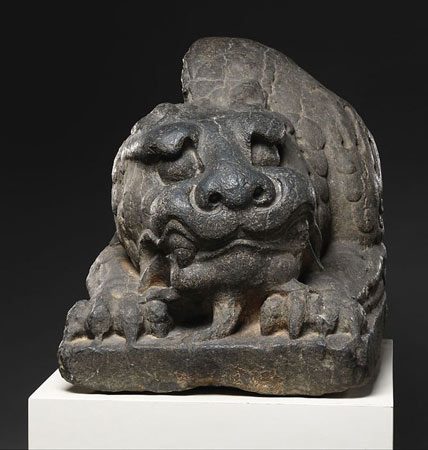
Corresponding lion statue showing a whorl pattern on the shoulders and body. This circular or spiral pattern would become more common in later Chinese lion sculptures.
Buddhism and the Lion’s Roar
Images of lions continued to be prominent during the Tang Dynasty (618-907 CE). This era saw a long period of peace and prosperity during which Buddhism would become officially adopted as the imperial religion. This led to countless Buddhist temples being erected across China, especially cave temples along the Silk Route in China’s western region. These cave temples were often adorned with intricate stone relief carvings of lions at their entrances.
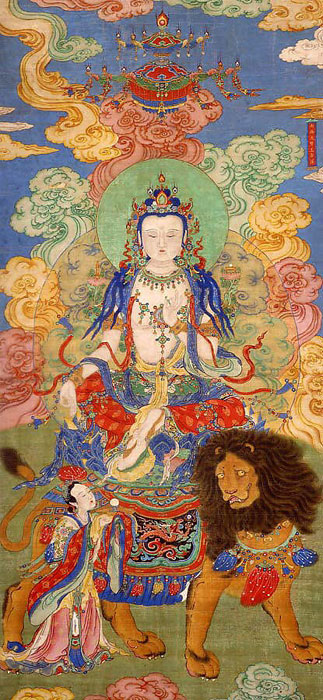
Although lion images originated in China during the Han Dynasty, the lion imagery of the Tang Dynasty is much different, with roots within the origin of the Buddhist faith. Because lions were native to Southern Asia at the time, lions were often associated with the imperial court of India. Shakyamuni, being the prince of the Shakya tribe, was said to be the “lion of the Shakya tribe”. This title remained with him as he abandoned his princely title and entered Buddhahood. As a result, religious images often depict Shakyamuni sitting on top of a lion's throne, riding a lion, or having a lion pet sitting nearby, guarding the Buddha as he meditates. These depictions humanized the ferocious lion. Being the pet of the Buddha, the lions are also often depicted with an embroidered necklace, suggesting that it is no longer a wild beast, but a civilized and domesticated being.
The voice of the lion is also an important symbolic element in Buddhism. Folk tales around the world speak of the lion as the king of beasts, having dominion over all other animals. Having such a commanding stature and presence, the lion’s roar is enough to cause all other creatures to tremble in fear or flee. Derived from this premise, the Buddhist faith asserts that to speak with a lion’s roar is to speak with an unshakable confidence. It is the type of confidence that can only come from unwavering faith and trust in one’s heart regardless of outside influence. Thus, the lion’s roar symbolizes wisdom, fearlessness, and a divine pride in Dharma practitioners.
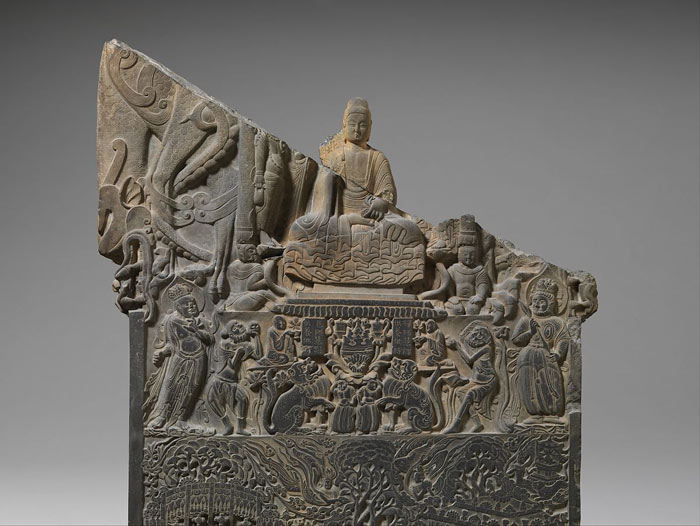
The top of a limestone stela from the Northern Wei Dynasty, 6th century. A pair of lions sit at the throne of the Buddha.
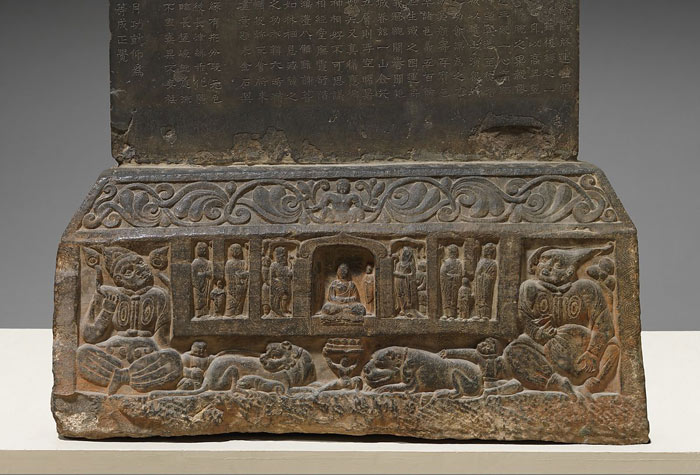
The base of the same limestone stela. A pair of lions flank the Buddha.
Yin and Yang: Lions of a Balanced World
The during the Song dynasty, culture, economy, and society saw a large boom. The population during the Song dynasty doubled. Economic development increased. Artistic development soared. It was also during this period that the popularity of Buddhism waned among the population. However, its influences remained within the general population, ushering in the new philosophical school of thought of neo-Confucianism and the reemergence of Taoism.
This change reverberated through society during the Song dynasty, guiding it to take on a much more structured form. Ideals of balance and order became important aspects for the Song courts and society. The belief in harmony of duality, expressed through Yin and Yang, is a core principle. The perspective of the world shifted from the transient realm of Buddhism to a balanced and orderly binary domain of neo-Confucianism. This philosophy can be seen in the artistic representation of the foo dogs, which would no longer be rendered as an identical pair of statues. The pair instead evolved into two separate forms, one female and the other male.
The lions, once perceived to be genderless or exclusively male, split to become two equal but opposing forces, the embodiment of balance of an orderly society. The Male has his paw on a beribboned ball, while the Female has hers on their cub. Interestingly enough, although the lions are male and female, their physical appearances are similar to the previous depiction of male lions: fully maned and muscle bound. A possible explanation for this is because the only visual reference Chinese artists have is of male lions that came into the Imperial Court as gifts. As a result, the artists were unaware of the biological differences between male and female lions.
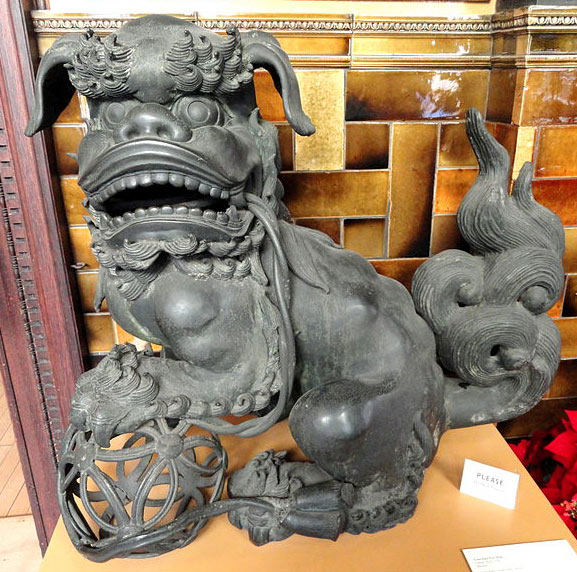
A male Foo Dog statue showing a paw on a beribboned ball.
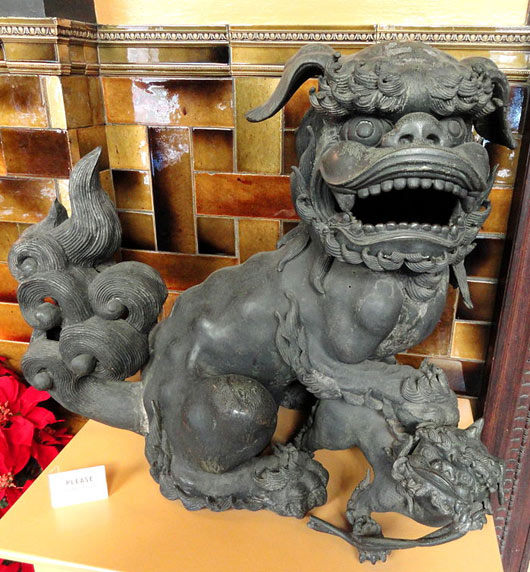
A female Foo Dog statue showing a paw on a cub.
The physical appearance of the lions is similar, but each is distinguished by the symbols that are depicted alongside the creatures. It is believed that the ball underneath the male lion represents the world. Images of lions playing with beribboned balls are decorative motifs during the Song Dynasty. Sculptures and paintings from this time also depicted the lion playing with an embroidered ball. This further removed the ferocious quality and illustrated the lion as a tamed animal. Mathematicians have analyzed the patterns used on these balls, and have determined that often the patterns used on these ornaments are mathematical structure. Composed of simple shapes that together form a solid sphere, these geometrical domes are said to represent the orderly and structured world.
Of course, the opposing quality of order is chaos. A fitting symbol able to represent such a quality is the newly born and yet-learned child. As such, the counterpart of the geodesic dome is a playful lion cub underneath the female lion paw. The cub depicted underneath the female paw enjoys a similar stylized depiction as its adult counterpart: fully maned with sharp teeth and claws. Perhaps it could also be interpreted through Taoist and Confucian perspectives, where the miniature cub is the perfect replicated version of its adult. As the son is a perfect replication of the father, daughter of the mother, and society of earth is the perfect reconstruction of the perfect and eternal heavenly court ruled by the gods.
Foo Dog Statues During the Ming and Qing Dynasties
The Ming Dynasty saw the return of the Imperial Court from the Mongol rule of the Yuan Dynasty. As a result, the Ming adopted a much more strict and isolationist policy. Trade along the silk road dwindled. Exacerbated by political and civil unrest in Europe and Central Asia, as well as a shrinking Asiatic lion population, artists in China lost their primary source of reference. Artists during the Ming Dynasty had to rely upon the visual depictions and oral interpretations of the lions from previous generations. These interpretations, however, tended to overly romanticize the majestic qualities of the lions. As a result, the lions joined the rank of the dragons and phoenixes, and their imagery became much more mythical.
Toward the latter half of the Ming Dynasty, the Ming court moved its capital to Beijing and constructed the Forbidden City. The Ming adorned their new capital with numerous lion statues. According to Jun Cheng in his book 'Traditional Lion Art in China,' there are six pairs of bronze lion statues in the Forbidden City. They are located in various important gates around the city. All male lions in these gates have their paws on geometrical balls. The most famous of the lions, the pair that sit guarding the entrance of the main hall, or the Gate of Supreme Harmony, became the famous lions that many reproductions of later generations would draw inspiration from.
The Qing Dynasty directly succeeded the Ming and inherited the Forbidden City. Instead of building a new capital, most of their resources were focused on expanding the already existing infrastructure. Large gardens and additional courts were erected in the Forbidden City, with new stone and bronze lion statues being added also.
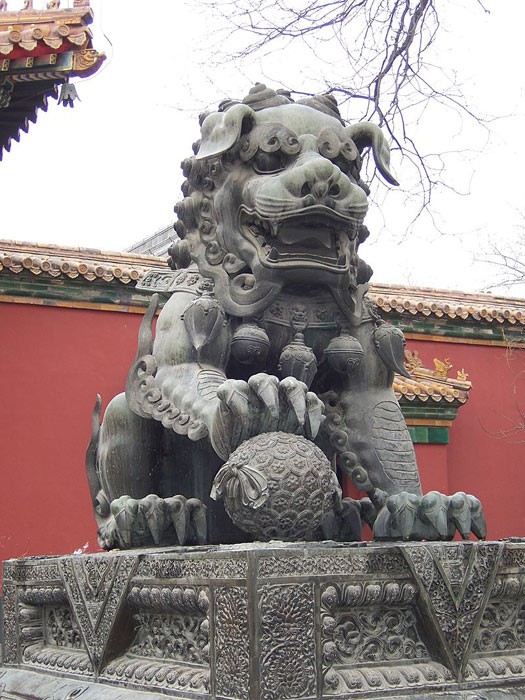
Qing Dynasty Foo Dogs like this statue at Yonghe Temple, are more dog-like in appearance than their Ming Dynasty predecessors.
The depictions of these new lions differed greatly from those of the previous generation. These lions are much more dog-like, more docile, and much less regal. They are also much more mythical, with the addition of scaled feet in some interpretations. The curled tongues of the Qing stone lions are more protruded and much more placid, as if the dog-lion is panting after a playful bout. The ears of the foo dogs of the Qing Dynasty also appear to be much more dog-like: long, floppy, and curling downward. Historians have suggested that this depiction of the foo dog ears, along with their placement in front of gardens and women courts, imply the foo dogs have turned its ears toward earth, away from the political and toward the domestic sphere.
Chinese Lions of Today
Foo dogs would eventually be introduced to the west not by way of the Silk Road but on the black ships of merchants, missionaries, and explorers of the 16th century. As trade relations between east and west grew, art and culture of the east became much more accessible to people in the west. However, the image and qualities of the foo dog had evolved and become so different from the actual earthly lions that inspired them, that these creatures were completely unrecognizable to people in the west. To them, these creatures were exotic, mythological beasts of the Orient. They were much more dog-like than the lion, and they called them shishi, foo dogs, or dogs of Buddha.
Today, foo dog statues and figurines have become a popular Feng Shui element in homes and are still incorporated as a prominent decoration at the entrance of buildings. In terms of appearance, these modern iterations vary greatly but most tend to be inspired by the Foo Dog statues of the Ming or Qing dynasty. Always featured in pairs, these mythical lions guard the dwelling and ward off evil spirits and intruders. They serve much in the same way as they were intended to serve thousands of years ago, as the guardians of the threshold, embodying the importance of liminality.
Porcelain foo dogs are a popular Asian decor accent for their charming character and Feng Shui properties.
References and Further Reading:
Damo, Mitchell. (2014). “Fu Dog Statues.” Scholarsage. http://www.scholarsage.com/fu-dog-statues/
Ebrey, Patricia Buckley. “Cave Temple.” A Visual Sourcebook of Chinese Civilization. Washington University. https://depts.washington.edu/chinaciv/bud/5temcave.htm
Francis LI Chung-hung, F.R.A.S. Gandharan Influence on Chinese Art during Tang Dynasty: Taking Lion as an Example. Maritime Silk Road Society.
Fong, Mary H. "Antecedents of Sui-Tang Burial Practices in Shaanxi." Artibus Asiae 51, no. 3/4 (1991): 147-98.
“Foo Dogs of China.” Hammer Museum UCLA. https://hammer.ucla.edu/blog/2014/03/foo-dogs-of-china
“Guardian Lion.” Met Museum. https://www.metmuseum.org/art/collection/search/49380
“Guardian Lion” Cleveland Museum of Art. https://www.clevelandart.org/art/1965.473
Juliano, Annette L. "Teng-Hsien: An Important Six Dynasties Tomb." Artibus Asiae. Supplementum 37 (1980): III-83.
Katz, Eugene & Jin, Bih-Yaw. (2016). Fullerenes, Polyhedra, and Chinese Guardian Lions. The Mathematical Intelligencer. https://link.springer.com/article/10.1007/s00283-016-9663-0
Knudsen, Maggie. (1997). “Foo Dogs.” Penobscot Marine Museum. https://penobscotmarinemuseum.org/PMM-Reader/palace-foo-dog-female/
Little, David B. "A Chinese Stone Lion from Lung-Mên Datable to A.D. 680-1." Bulletin of the Museum of Fine Arts 38, no. 228 (1940): 52-53. http://www.jstor.org/stable/4170766.
Marianne Hulsbosch, Elizabeth Bedford, Martha Chaiklin. (2009) “Asian Material Culture.”Amsterdam University Press.
Sirén, Osvald. "A Chinese Stone Lion." The Burlington Magazine for Connoisseurs 47, no. 273 (1925): 276-81. http://www.jstor.org/stable/862702.
Tibor, Tarnai. (1996). “Geodesic Dome under the Paw of an Oriental Lion.” Department of Structural Mechanics, Budapest University of Technology and Economics. http://www.mi.sanu.ac.rs/vismath/visbook/tarnai/
“What is the connection between lions and Buddhism?” World Tribune. https://www.worldtribune.org/2018/03/q-connection-lions-buddhism/


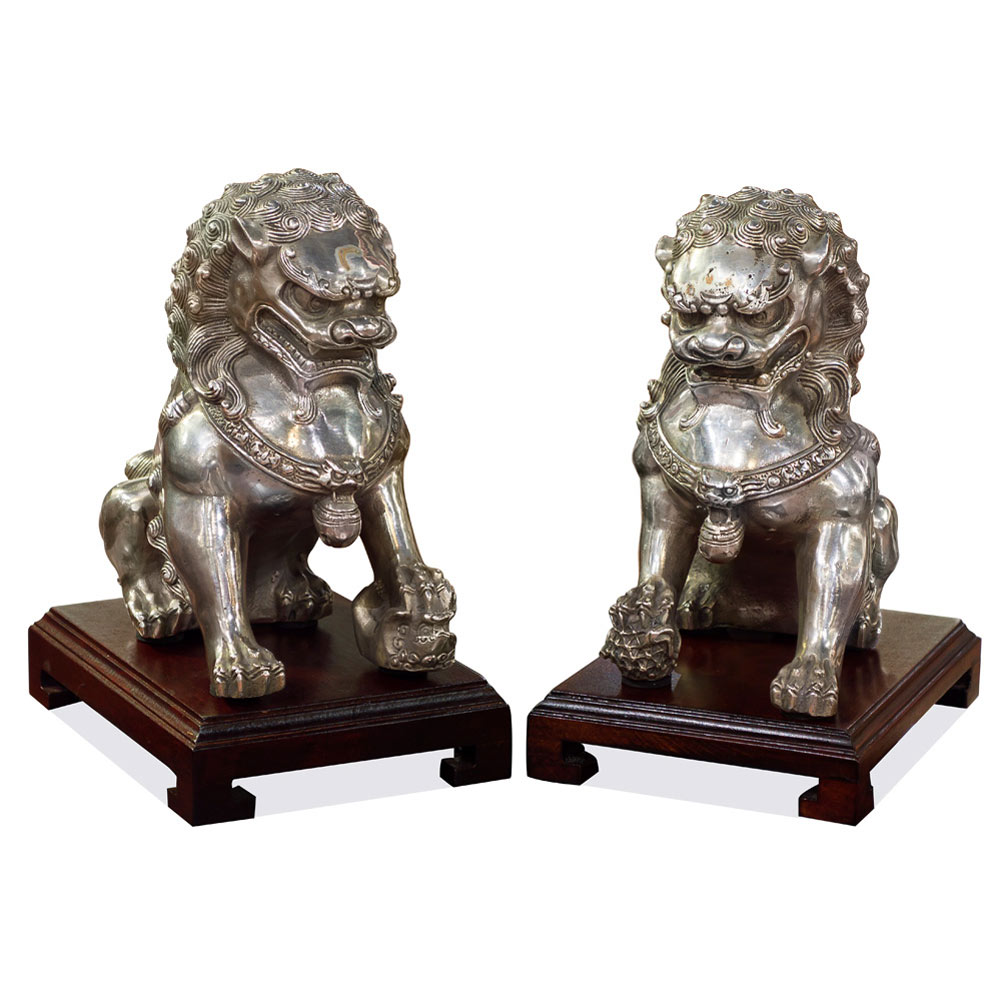
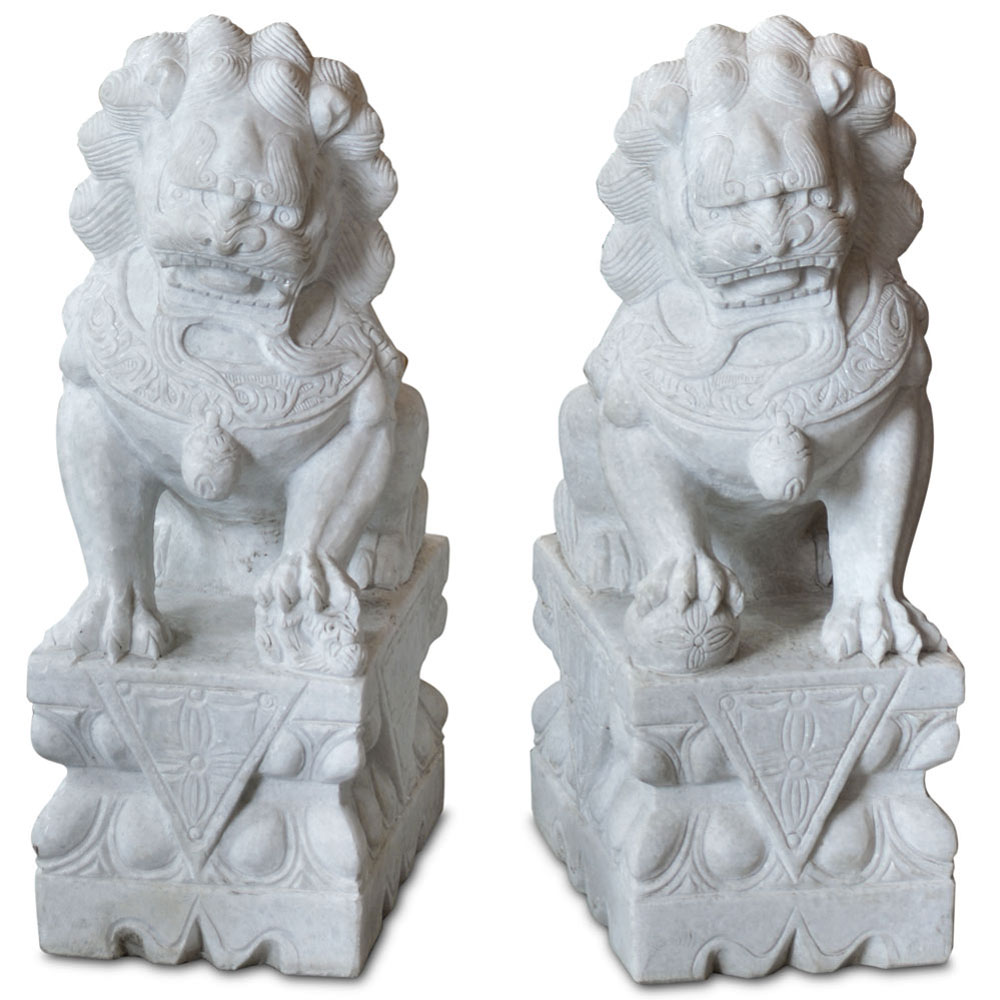
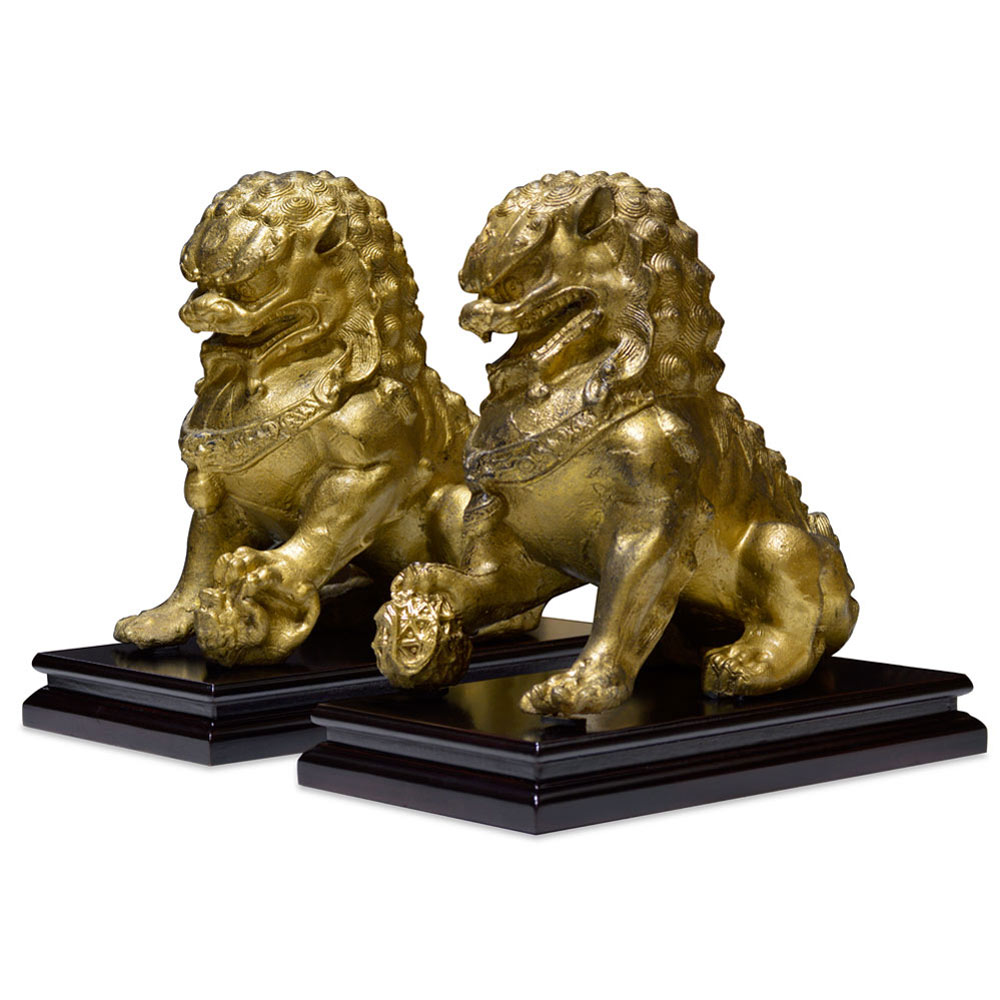
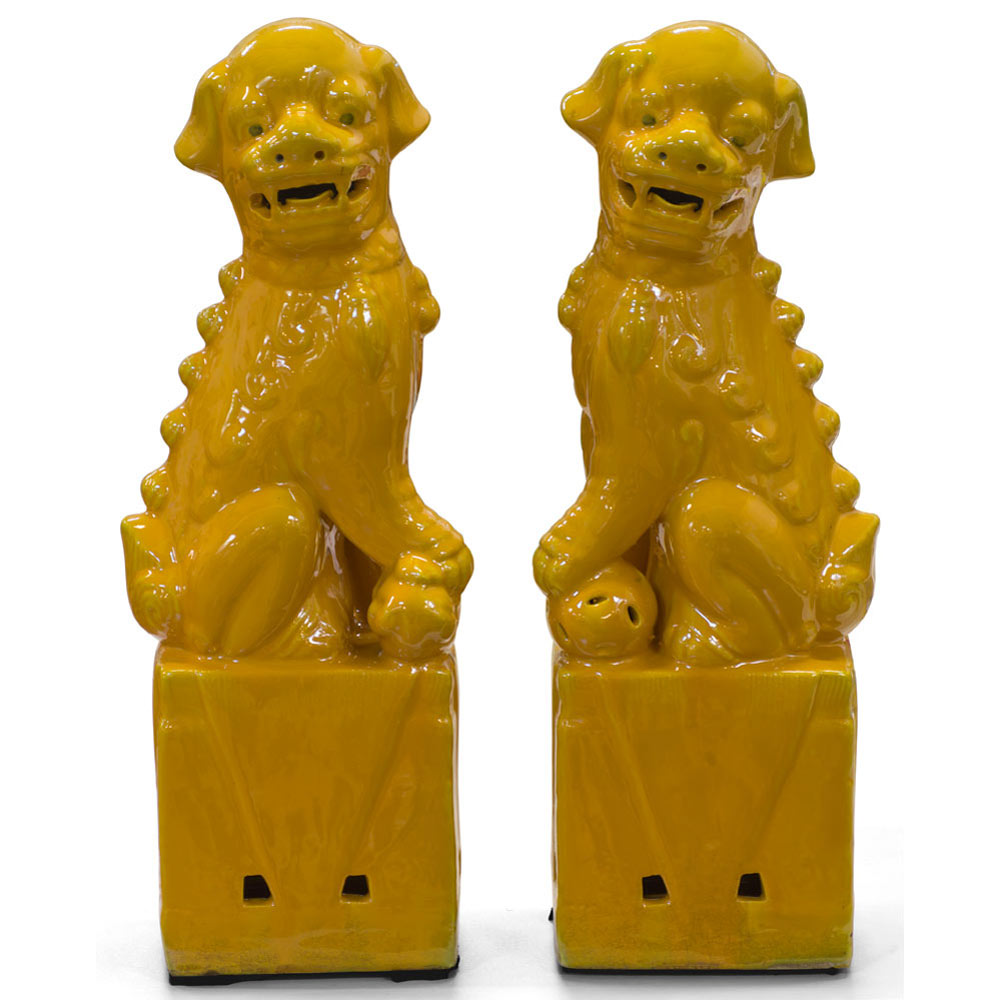
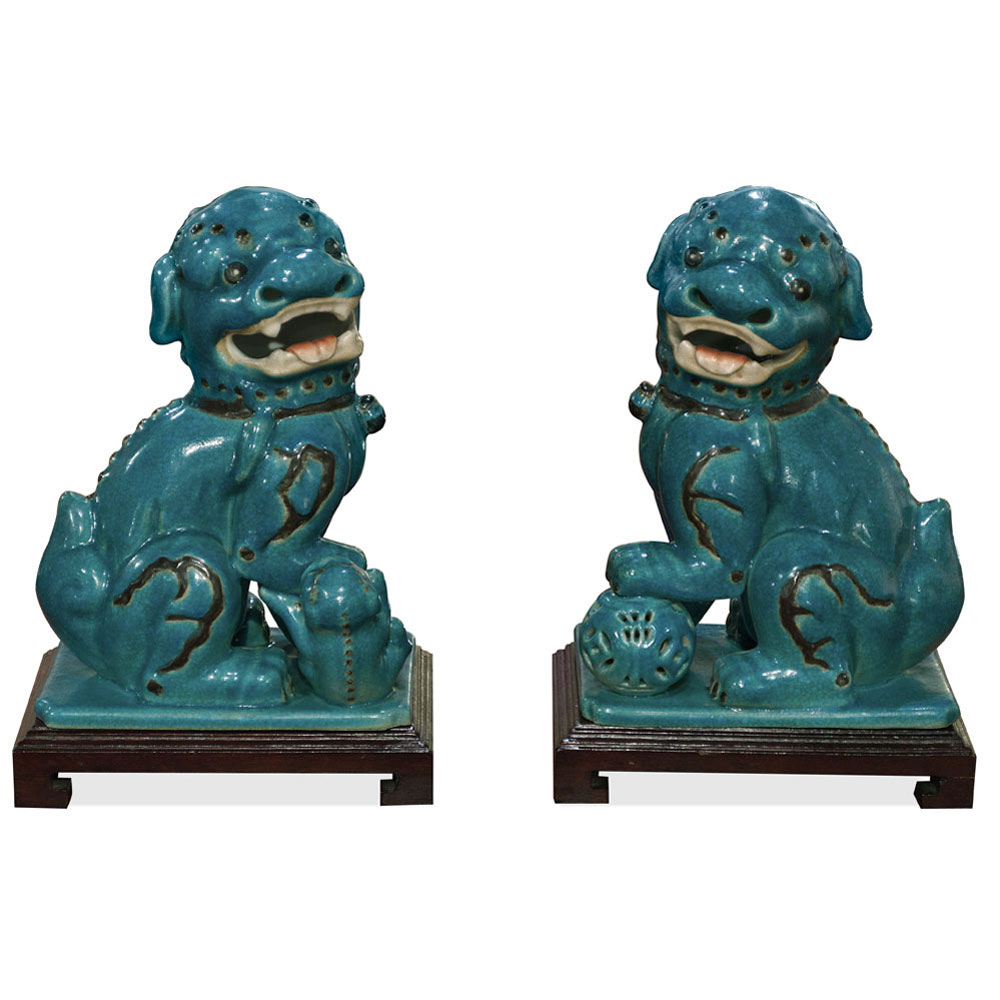
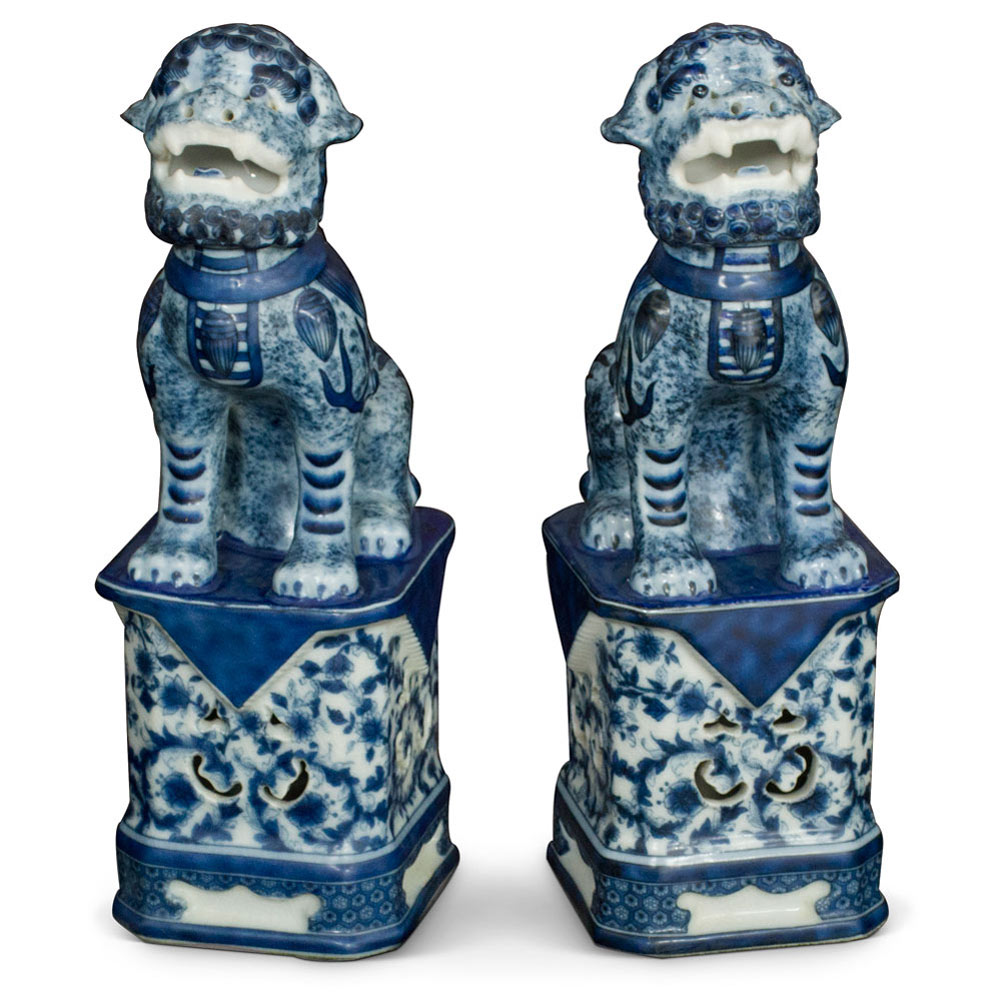
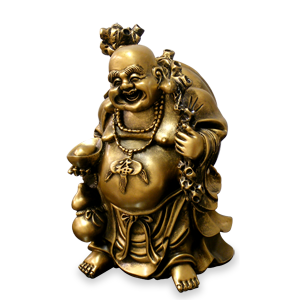
SocialMedia